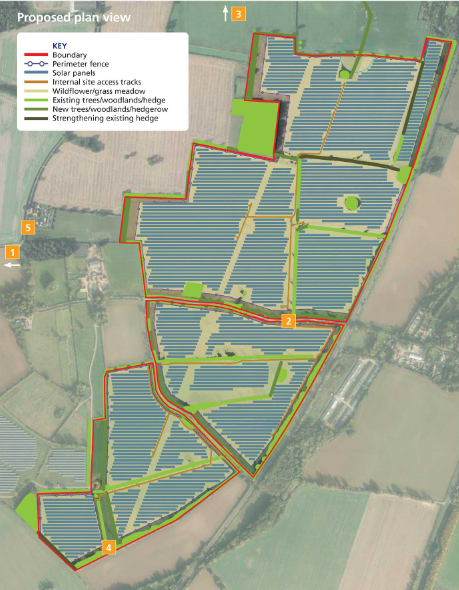In August, Network Rail announced a solar power agreement with EDF Renewables UK to make the railway cleaner and greener. The agreement will see Network Rail take the entire 49.9MW output of the new 200-acre solar farm at Bloy’s Grove.
Located between the villages of Swainsthorpe and Mulbarton, just south of Norwich and alongside the Norwich to London main line, Bloy’s Grove will be one of the largest solar farms in the UK when it’s construction is complete.
The agreement is part of Network Rail’s Journey to a Zero Carbon and Sustainable Railway. Network Rail’s 30 year ‘Environmental Sustainability Strategy’ has four key objectives: (i) providing a low-emission railway; (ii) climate change resilience; (iii) improved biodiversity; and (iv) sustainable materials with minimal waste.

The Strategy’s energy vision is to serve the nation with the cleanest, greenest form of public transport. This includes a challenging sustainability objective of net zero carbon emissions by 2050 (and 2045 in Scotland) with a 25% reduction by the end of the current CP6. This will deliver continual improvements to air quality so that passengers, neighbours, and employees breathe healthier air.
First of its kind
Reduced emissions are to be achieved through the increased use of electric traction, wide adoption of electric vehicles, an element of offsetting through planting of trees, and through the procurement of carbon neutral electricity. For traction current this will be primarily from nuclear sources. The Strategy aims for 100% of non-traction energy to come from renewables by 2030. The new Bloy’s Grove solar farm will provide around 15% of Network Rail’s current national non-traction energy consumption that will power its stations, offices, and depots across the country.
Jo Lewington, chief environment and sustainability officer at Network Rail, said: “Rail is already in a strong position in terms of its green credentials but it’s crucial that we do everything we can as a business to improve air quality, minimise our use of fossil fuels, and transition to an industry powered by green, renewable, low-carbon energy.”
She described the agreement as a “first of its kind, a huge moment not just for Network Rail but the rail industry as a whole.”
Local benefits

Bloys Grove is one of seven 50MW projects that EDF is developing across the UK. Matthieu Hue, chief executive of EDF Renewables UK, explained that “renewable technologies are key to decarbonising the UK’s electricity system, and the Bloys Grove project shows the ability of EDF Renewables UK to provide diverse renewables solutions for customers”.
The Bloy’s Grove project is expected to save around 14,000 tonnes of carbon dioxide emissions each year. As well as making a substantial contribution to the low emission railway objective, the project will also support the objective of improving biodiversity of plants and wildlife. As part of the build, EDF Renewables UK will improve habitats for plants and insects, plant and maintain trees and hedges, and create wildflower and grass meadows throughout the 200-acre site.
The project, led by Network Rail’s Decarbonisation Programme, will also deliver significant additional local benefits, with an annual community fund of £20,000 throughout its 35-year lifetime. A community fruit orchard on the edge of the site will become the focus of annual harvesting days managed by EDF’s community team.
The project will be constructed and completed during 2024 and will provide zero-emission, solar generated energy supporting Network Rail’s non-traction needs until 2059.

